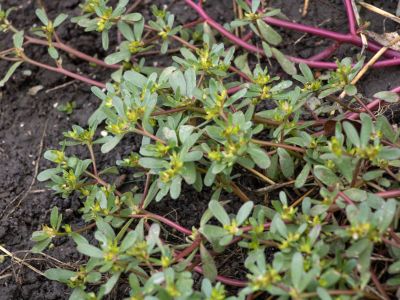Identifying Weeds with Succulent Leaves
Purslane plants are trailing, succulent-type weeds with a mat-forming habit. With fleshy, succulent leaves and reddish stems, it can become a prolific nuisance in your yard. Native to India and Persia, purslane has spread around the world. It is related to the popular bedding plant portulaca (moss rose). Since the plant germinates when soil temperatures are warm, you likely won’t see it until later in summer. Germination occurs when the effect of the pre-emergent herbicides you applied in spring have worn off. These herbicides are not normally applied to the vegetable garden or anywhere edibles might grow. If purslane has popped up once in your yard, it is guaranteed to reappear year after year from the prolific seeds it produces. Purslane produces yellow blooms. If you find it to be a problem in your landscape, remove it before flowers go to seed. Succulent garden weed info says seeds in the soil can remain viable up to 40 years. That’s a long time!
Controlling Succulent Lawn Weeds
Purslane in the lawn may be controlled by pre-emergent treatments you’ve already applied. While purslane will sprout and grow in any area, it seems partial to the already tilled soil of your veggie garden bed. Learn to recognize purslane and remove it before it flowers. A thick layer of mulch may help control the weed to some degree. Tilling the soil is known as purslane multiplication, sources say. Broken pieces have no problem rooting back into the soil. This weed is just as content growing in your gravel driveway, you can expect it anywhere in your yard. This multi-branched weed is drought tolerant and grows happily without encouragement. As an alternative for getting rid of the succulent weed, if you wish to try the tart and tasty leaves of the plant, choose them when they’re young and tender. Tasting similar to watercress or spinach, you can use them in salads or on sandwiches. Leaves may also be lightly sautéed in stir-fry dishes. Positively identify the plant before consuming it though.
